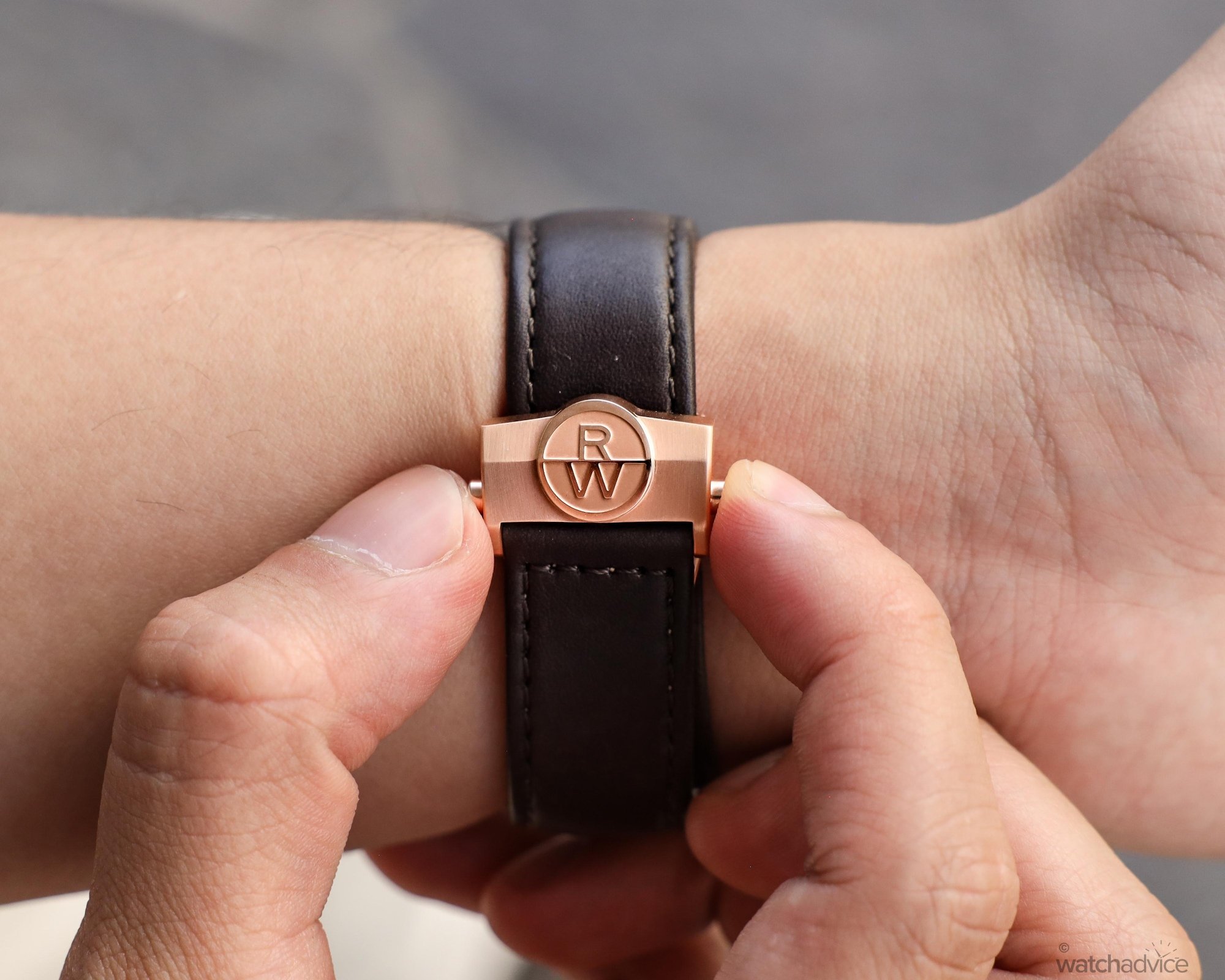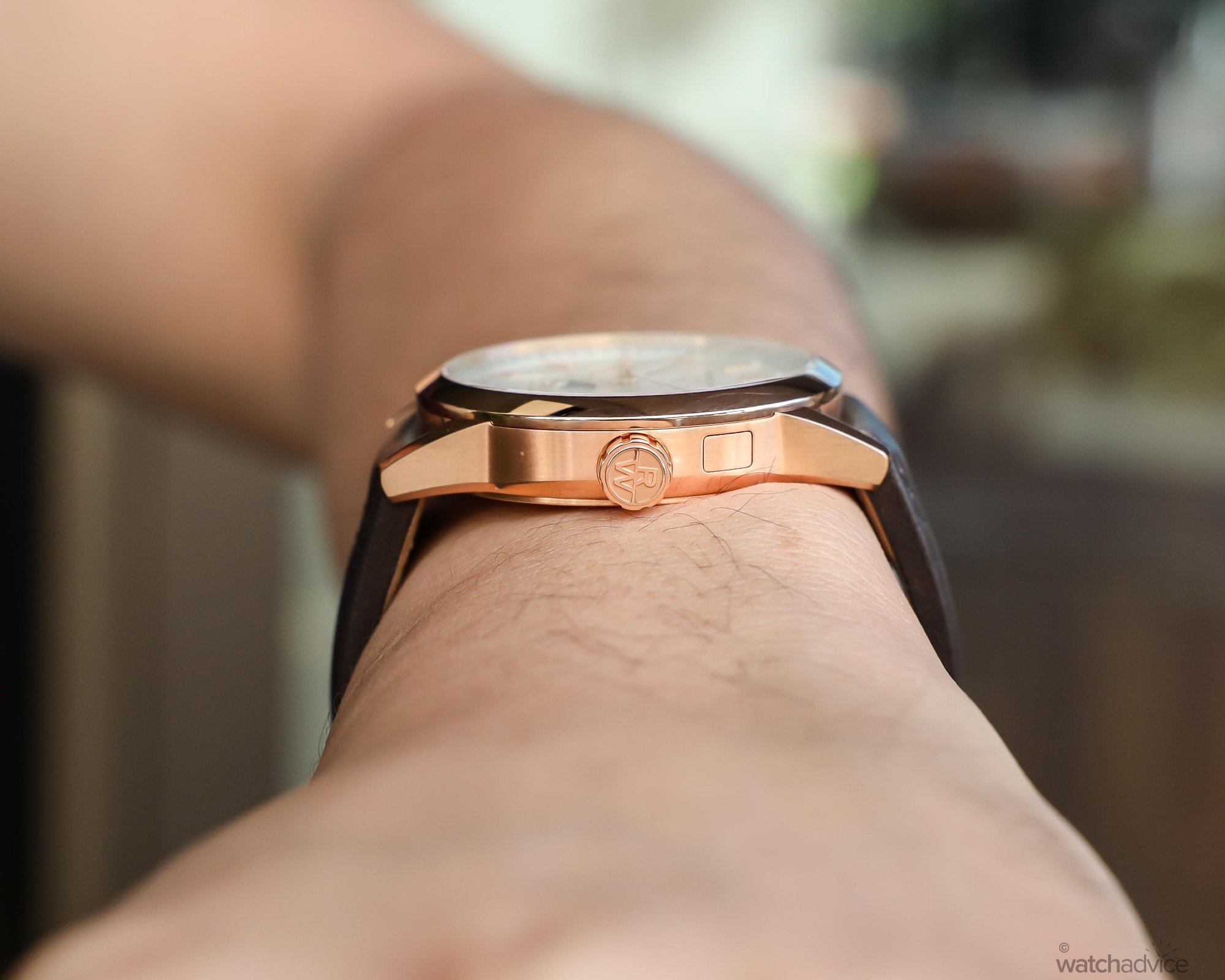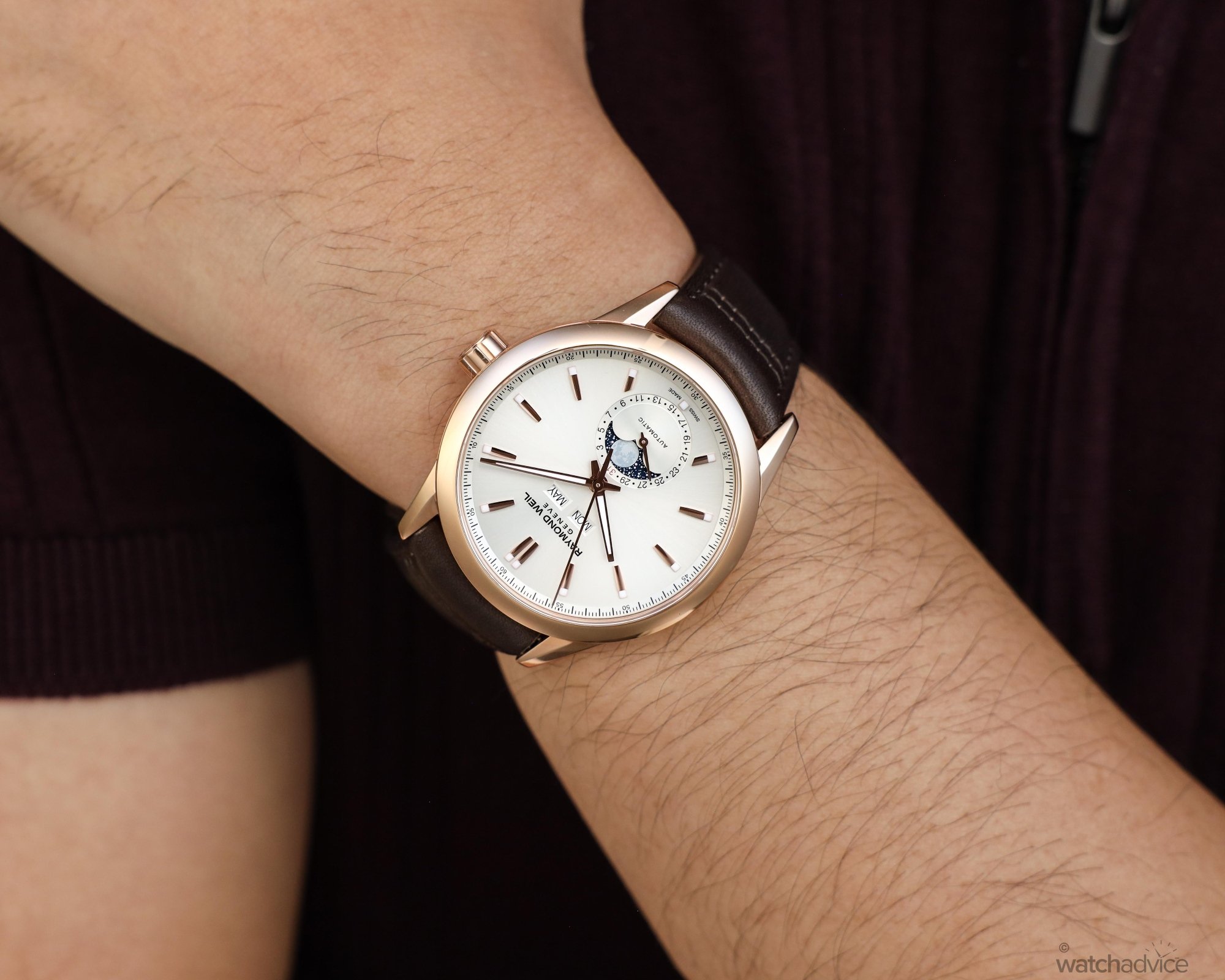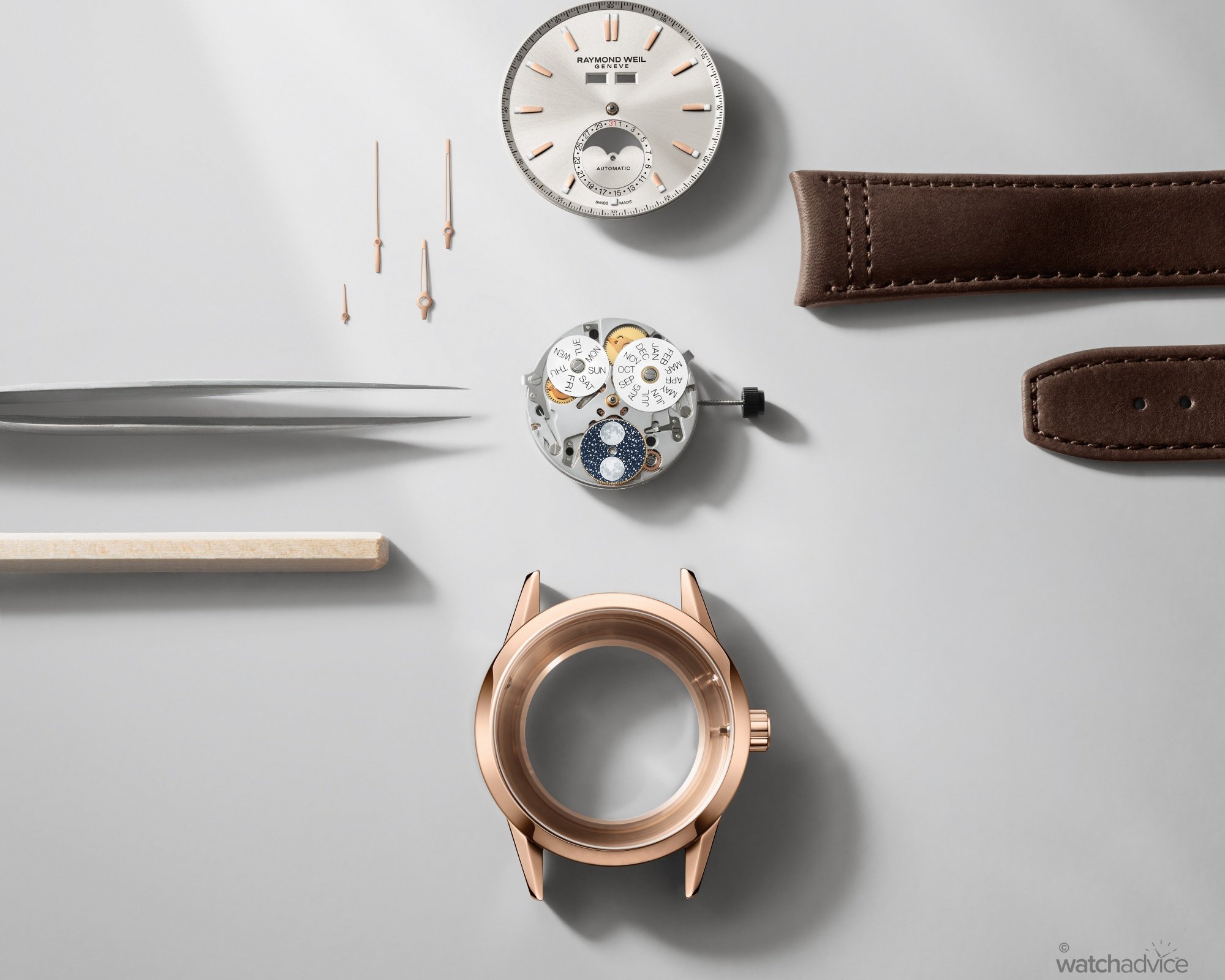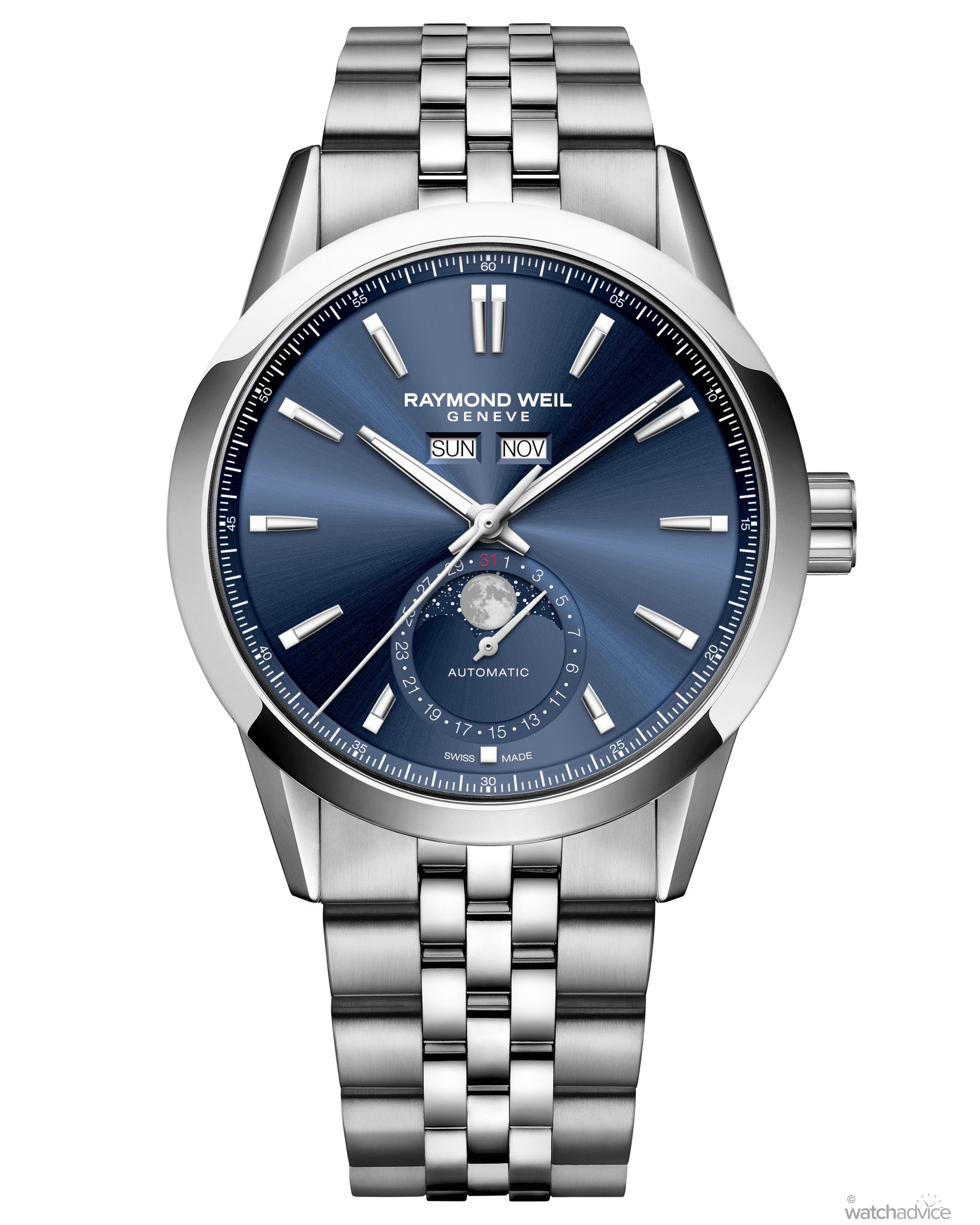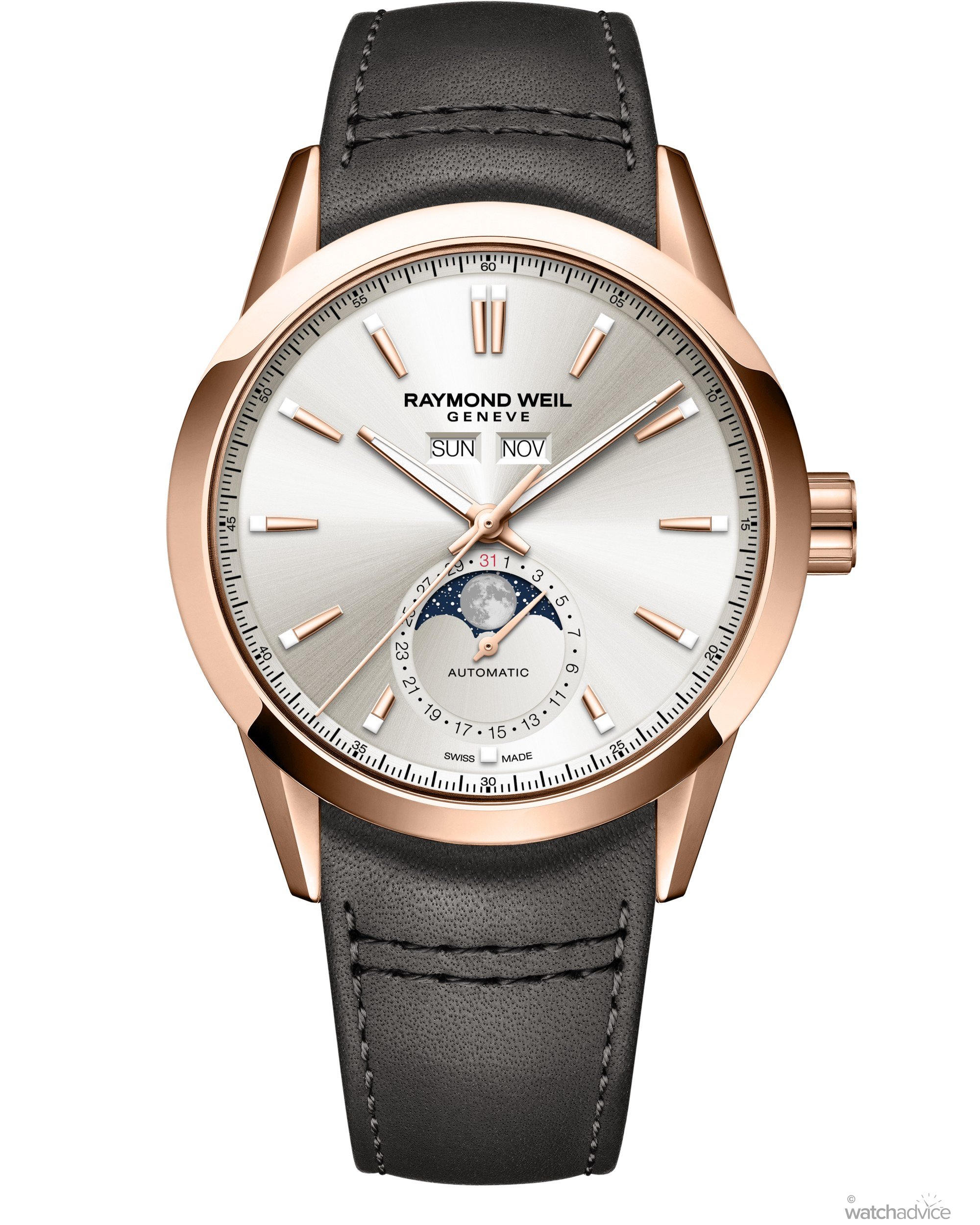As Raymond Weil comes out of their shell, so do more incredible timepieces. But have they hit a new peak with the Freelancer Complete Calendar? Let’s find out!
What We Love:
- An elegant and versatile design
- Quality-of-life upgrades to a classic complication
- Excellent value proposition with few competitors
What We Don’t:
- Movement finishing somewhat lacklustre
- Calendar is hard to see from a distance
- Do we need the lume?
Overall Rating: 9/10
- Value for Money: 9/10
- Wearability: 9/10
- Design: 9/10
- Build Quality: 9/10
There’s a rapid surge happening in watchmaking right now. No, I’m not talking about the newly imposed 39% U.S. tariffs on Swiss watches (though that’s a story in itself), but rather the quiet re-emergence of the middle market. As household names climb further upmarket, a new wave of brands are pushing harder than ever, flexing their creative and horological muscles to prove what they’re truly capable of. Christopher Ward is one; Frederique Constant and Maurice Lacroix are others. But perhaps the most impressive contender in this power shift is none other than Raymond Weil.
Nearly 50 years young, the family-owned independent has been quietly racking up achievements and accolades. Their breakout moment came with the GPHG-winning Millésime collection, followed by ambitious world timers and flyback chronographs — complications that once felt far beyond the brand’s reach. And at Watches & Wonders Geneva this year, Raymond Weil unveiled perhaps its most compelling piece yet: the Freelancer Complete Calendar. Not only RW’s first complete calendar, it may well set a new benchmark for the brand in both design ambition and value-driven watchmaking.
At a fair dominated by halo pieces that most collectors will never even see nor buy, the Freelancer Complete Calendar was a fascinating standout. A new movement, a refreshed vintage-inspired aesthetic, and an unexpectedly competitive price point combined to make it one of the most compelling releases of the show. It even landed in my top three picks of the entire event— terrible haircut and all — so I knew I had to see it in person to find out if my instincts were right.
First Impressions
Raymond Weil had already blown my expectations out of the water with the Millésime release, but that was with an entirely new collection; To truly judge what the brand was truly capable of, I needed to see what they could deliver within their standard line-up. The Freelancer, in particular, is the flagship collection of the Raymond Weil catalogue, but admittedly it had never stood out to me. In my limited interactions with the line, many of the pieces I tried felt bulky and broad on the wrist – not ideal for someone with forearms as slight as mine, or for its often-elegant aesthetic. Thus, it always sat outside my sensibilities. While the Jean-Michel Basquiat collaboration and the symmetrical open-heart models briefly caught my eye, my interest unfortunately never lasted.
With my renewed fascination in the brand, though, I was eager to try the new Freelancer Complete Calendar. The older models would no doubt remain fixtures in the Raymond Weil catalogue, but this watch felt less like a refresh and more like a restart. That carries risk, certainly, but also the promise of a new path that could outshine the old one.
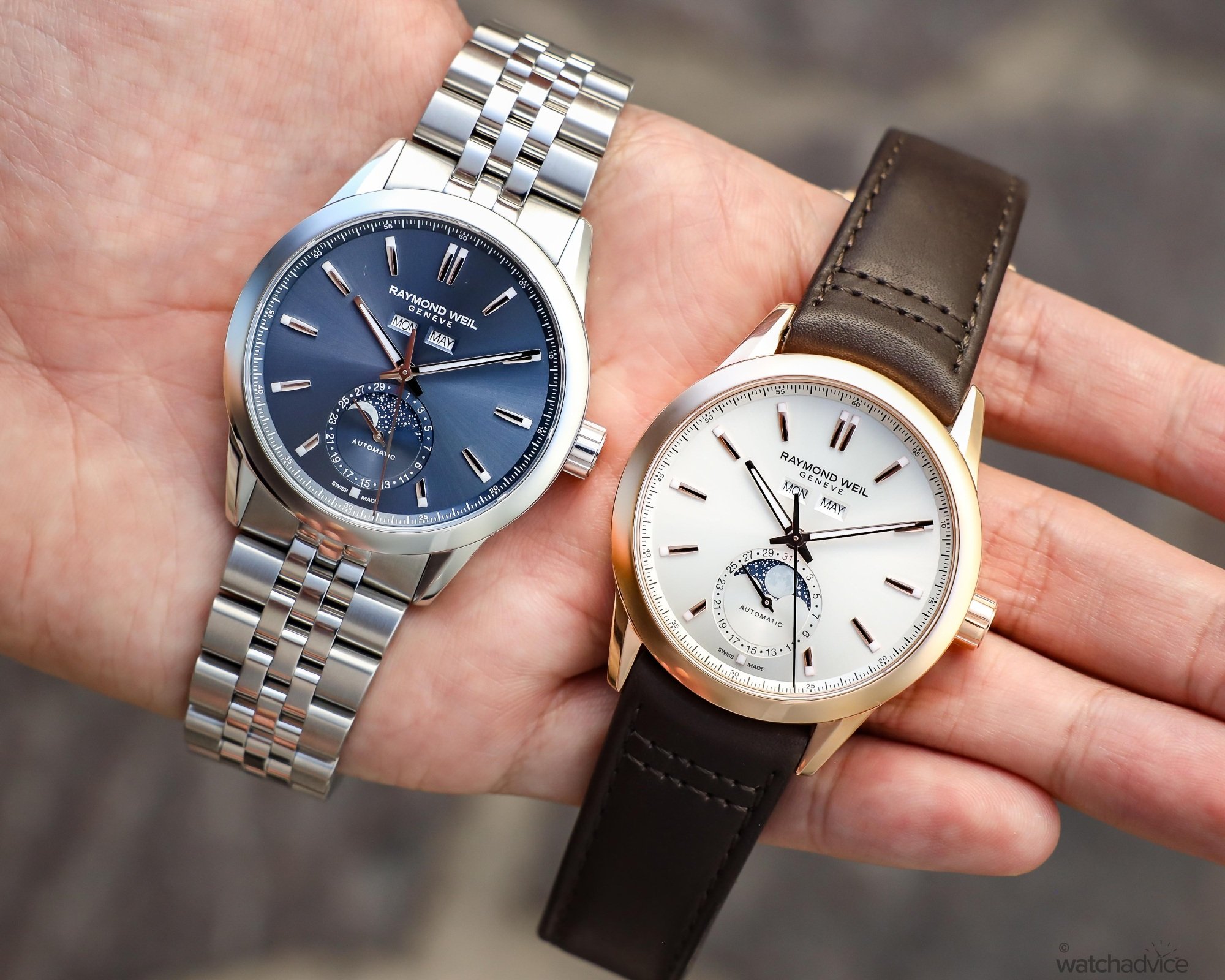
Still, having spent much of my Watch Advice career singing the praises of Raymond Weil until my throat gave out, I couldn’t shake the irrational worry that I might have been wrong about them. Yet as I studied the photos and notes Chamath and Matt sent from Watches and Wonders, I kept the faith and held my judgment. It wasn’t until Raymond Weil kindly gave us the chance to handle the watches in person that my doubts began to ease. While I spent time with both the steel and rose gold PVD versions, it was the latter that left the deepest impression – and remains the focus of this review.
The Design
The Raymond Weil Freelancer Complete Calendar takes the brand into territory that feels both familiar and uncharted. While the steel version aligns more closely with the modernist aesthetic of other Freelancers, the rose gold reference manages to strike a balance between individuality and tradition. For dress watch enthusiasts, it feels almost second nature, yet it doesn’t disappear into a sea of its contemporaries. The sunray-brushed dial, finished in a colourway Raymond Weil calls ‘Dune,’ adds to this distinction. Silvery-beige, though not quite champagne, it recalls the dress watches of old without leaning too far into heritage territory.
Despite this, it retains the classical dress watch design elements you may already know and love, combined with signature stylings of the Freelancer line. For example, the minute and seconds track still sits on the raised rehaut (or periphery) of the dial, interrupted only by Arabic numerals marking each five-second interval. The indexes are tapered, rounded, and mirror-polished, as are the stick hands. These are all Freelancer-specific design features, and result in a timepiece feels neither angled nor sharp: an unobtrusive, inoffensive, yet refined and sleek design.
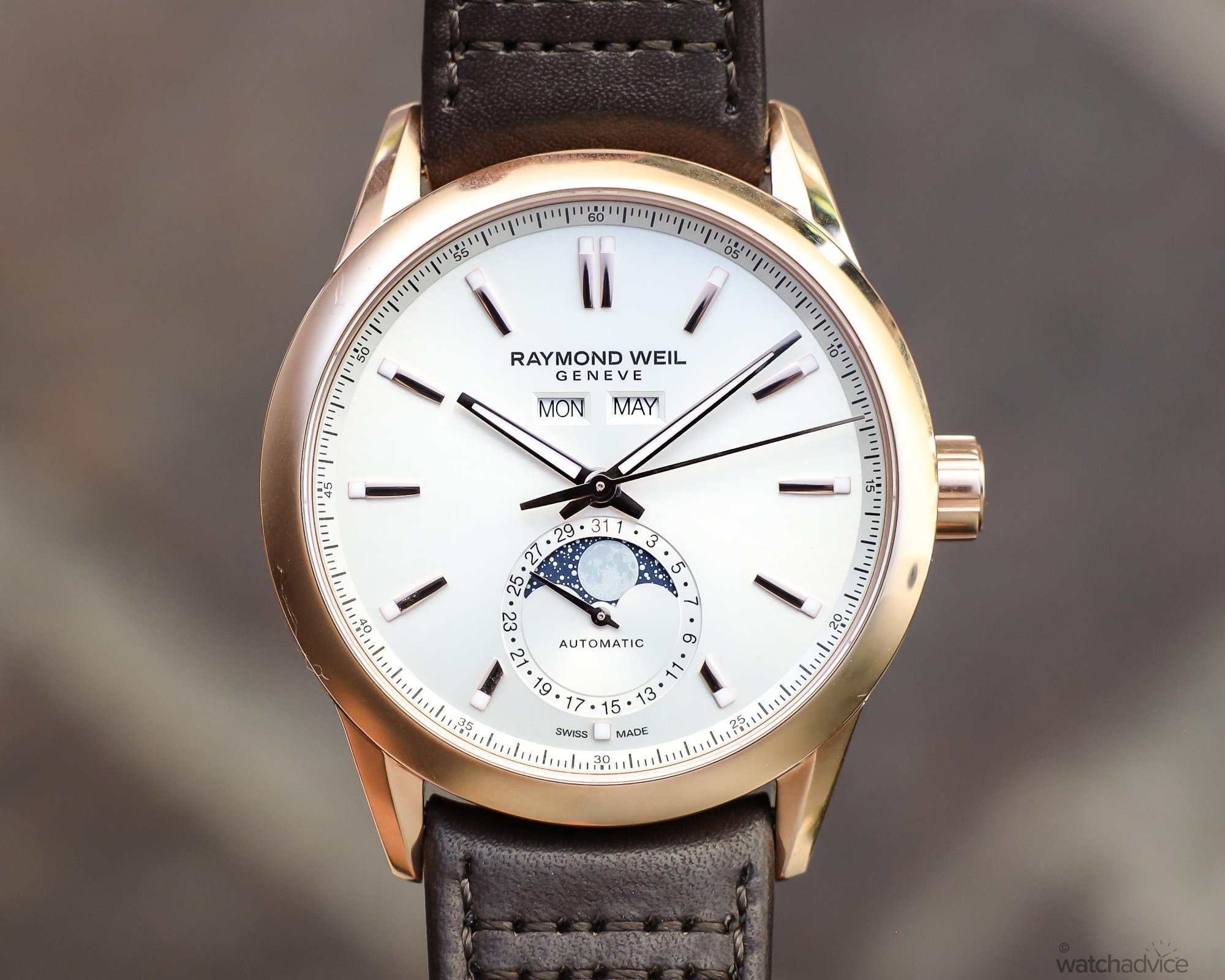
The rounded indexes guide the eye to take in the dial as a whole – encouraging you not to linger on minute details, but to appreciate the overall picture. I like this approach, as it lets the wearer enjoy the watch for what it is without overthinking whether one polished surface is more consistent than another. Not that there are any noticeable inconsistencies, but I never felt the need to scrutinise it under a loupe and scour it for tiny flaws.
Behind each index, and within the hour and minute hands, sit healthy dollops of lume. While it’s also a returning feature from the broader Freelancer collection, I can’t help but feel it’s an unnecessary design compromise for a dressier model. Much like the Millésime, the lume feels out of place, though it remains largely harmless – and I’m not about to refuse even the smallest chance of a low-light reading.
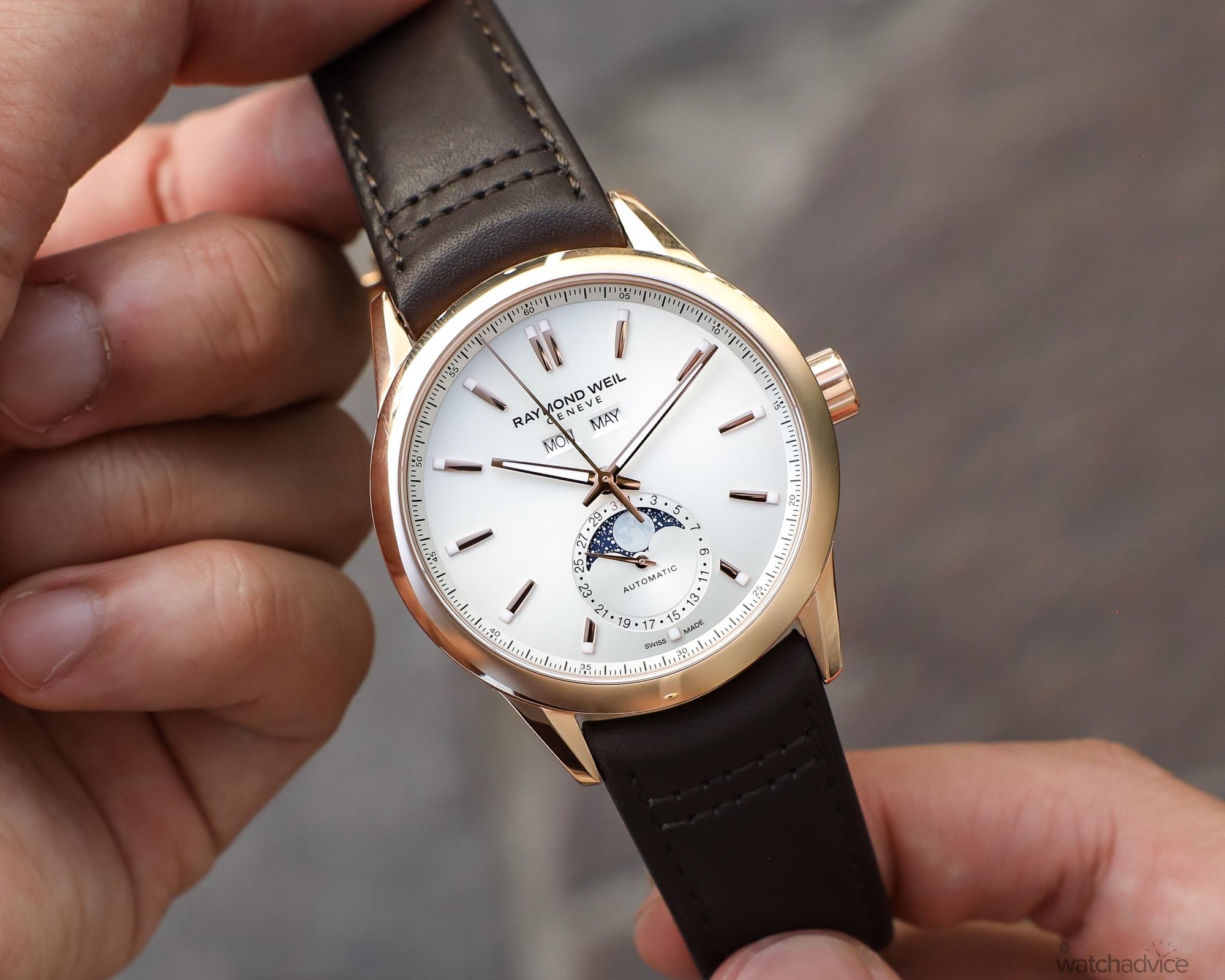
Breaking up the ‘Dune’-coloured dial and the rose gold indexes is the triple calendar and moonphase complication. The layout is what you would typically expect, with the abbreviated day in a left-hand cutout and the abbreviated month in a similar position on the right. The six o’clock date subdial sits slightly inset compared to the rest of the dial, adding a subtle sense of depth, with the moonphase displayed within its borders. From what I’ve heard, Raymond Weil hand-painted the blue disc and used a photorealistic depiction from NASA for the moon. While I don’t usually pay much attention to moonphase complications, this detail was perhaps the only time I found myself pressing my eye to the sapphire crystal. It’s a neat addition to appreciate, when you have the time.
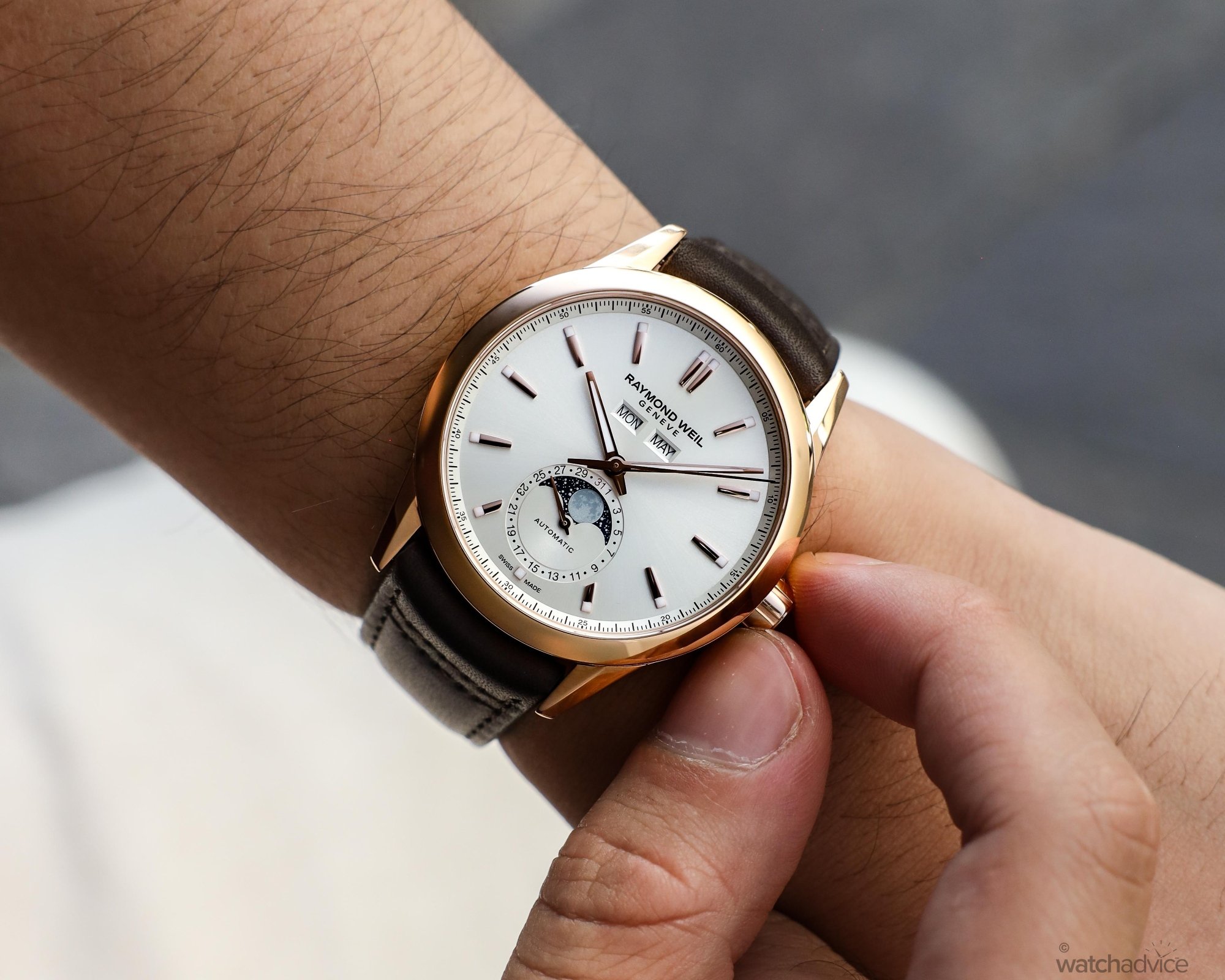
Moving out from the dial, you can admire the Freelancer Complete Calendar in all its rose-gold glory. The case profile, while less unique than the finishing, still differentiates itself from the wider Freelancer line and suits the dressy sensibilities of the watch perfectly. As you may have guessed, the timepiece isn’t made of solid rose gold, but stainless steel with a rose gold PVD coating. Short for Physical Vapour Deposition, PVD not only allows the watch to maintain a competitive price point but also creates a durable, corrosion-resistant barrier compared with traditional gold plating. While you miss out on the weighty feel of a full-gold watch, the visual effect is hardly compromised – and your wallet will likely thank you in the process.
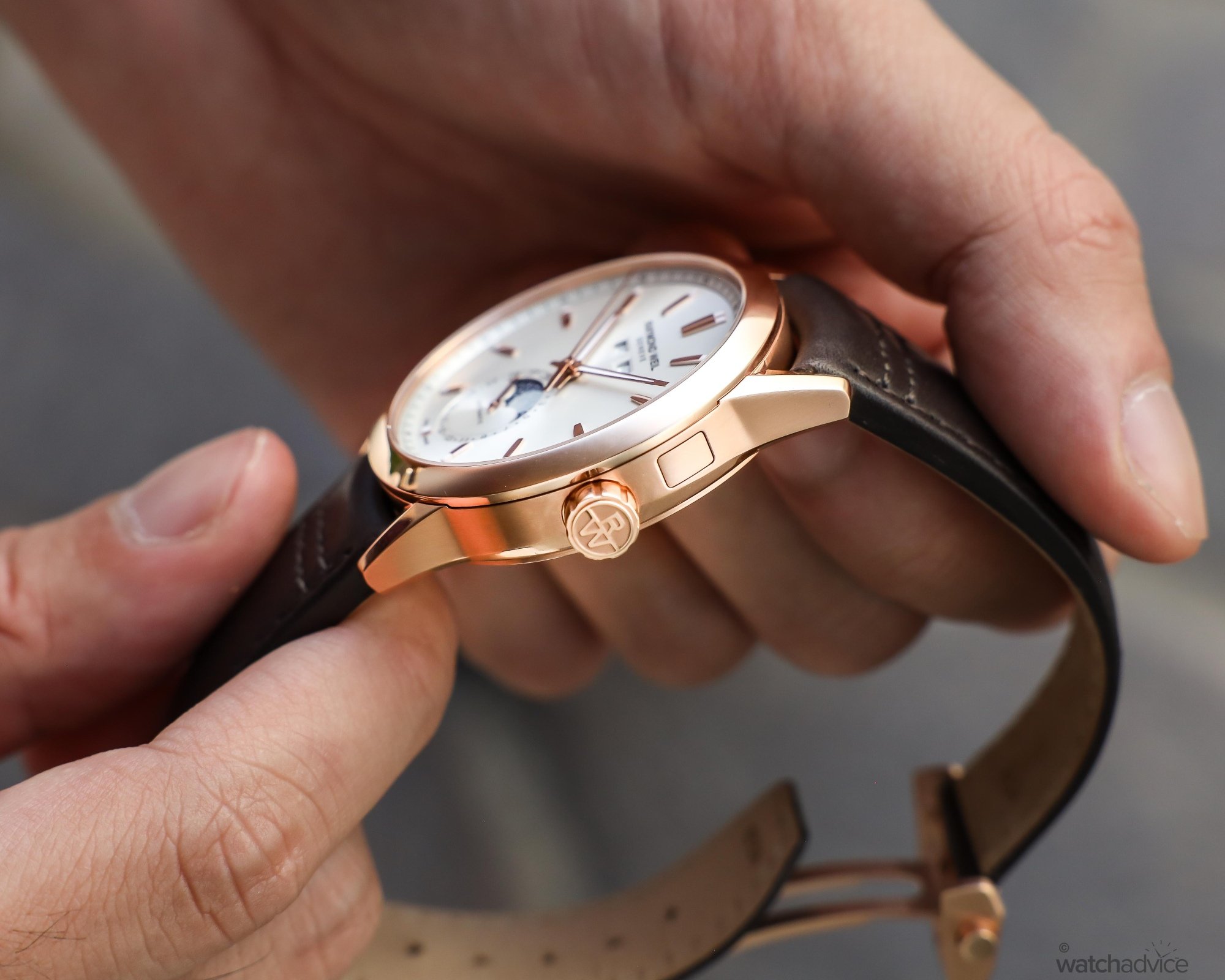
Though more accessible in price, it’s clear that Raymond Weil has gone to considerable lengths to make the watch compelling from every angle. The case is, for want of a better term, a finishing sandwich: the top, including the bezel and lugs, is fully mirror-polished, as is the bottom, while the middle case flanks are entirely horizontally brushed. This creates a varied and distinctive finish that helps the Freelancer Complete Calendar stand out from other watches of a similar aesthetic. From each case flank, two square cutout panels can be seen – which we will get to later – as well as the signature Raymond Weil crown, which provides 100m worth of water resistance. Again, not a feature you’d commonly find on a dressier watch like this, but a welcome feature, nonetheless.
The case and lugs give way to a curved strap. On this reference, the strap is brown calfskin leather, ending with a signed deployant-style clasp that mirrors the finishing of the watch. While I don’t have many notes on the strap’s overall design, I can’t help but wonder how it might have looked with a different type of leather. It has a slightly shiny finish – not necessarily out of place against a highly polished watch like this, but perhaps a nubuck strap would have better offset the rose-gold dazzle. This isn’t an issue on the steel reference, which uses a five-link bracelet in place of leather.
Finally, turning the watch over, you’ll find the movement of the watch on display. Behind the sapphire sits the Calibre RW3281 – which, again, we’ll touch on later – complete with its signature automatic rotor, housed within a screw-in caseback adorned with the engraved flavour text typical of most timepieces. Overall, the Raymond Weil Freelancer Complete Calendar’s aesthetics and design are largely consistent and elegantly executed. It isn’t intended to blow minds or completely upend the industry, but what it does, it does remarkably well – leaving me scrambling to find faults, lest I be accused of being a Raymond Weil ‘stan.’ (Sidenote: I kind of am.)
How It Wears
Smaller than most of its older cousins, the Raymond Weil Freelancer Complete Calendar is a distinctive step forward in both aesthetics and wearing experience for the brand. The case measures 40.5mm in diameter, with a 48mm lug-to-lug length and a thickness of 10.15mm. That makes it one of the thinnest complete calendars on the market, with a wrist presence that feels understated yet refined. To put it in perspective, it’s 0.5mm thinner than both the Jaeger-LeCoultre Master Control Calendar and the Blancpain Villeret Quantième Complet Phases de Lune. Both measure around 10.65mm thick, and while their level of finishing is undoubtedly higher, it illustrates Raymond Weil’s rapid development as a watchmaker.
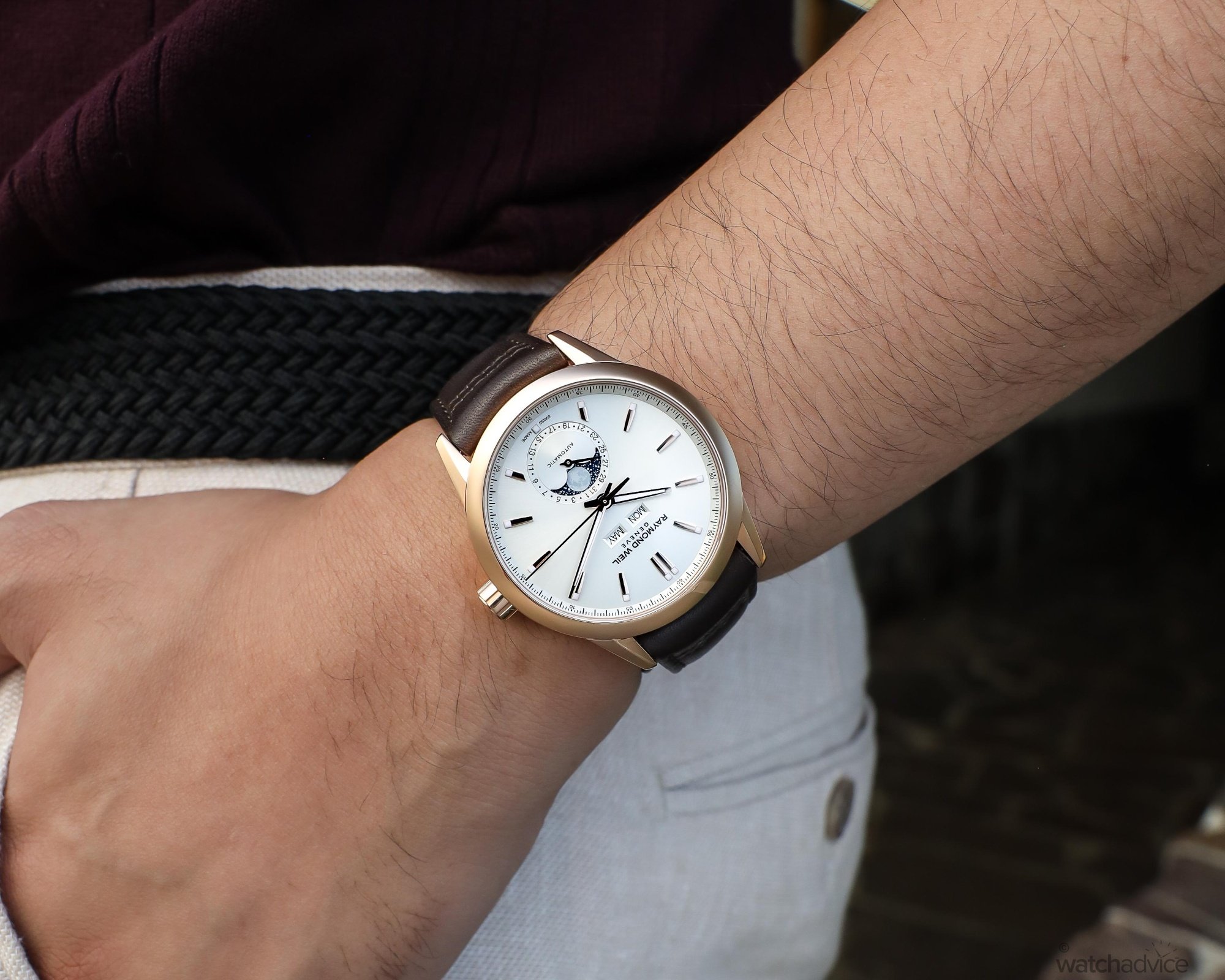
As I mentioned regarding the rose gold PVD, the wearing experience is closer to that of a steel watch than a solid gold one. Moving from the Rolex 1908 Settimo to this made that difference more apparent to me, but it’s hardly fair to assume everyone will have a gold watch on hand to compare against the Freelancer Complete Calendar. For most, the good news is that the watch wears well. The slim case profile helps it hug the wrist neatly, keeping things comfortable and discreet. Though the lugs did threaten to overhang my wrist at times (even at a manageable 48mm length), it was never to the point of real concern.
Interestingly, my only real gripe with the wearing experience had less to do with comfort and more to do with legibility. For such a thin case housing a full triple calendar, I understand compromises are inevitable – but even as a twentysomething watch nerd with (relatively) decent eyesight, I occasionally struggled to read the day, month, and date. The pointer date is straightforward enough and any misreads could be chalked up to human error, but the lettering for the day and month indicators might have benefited from being a touch larger or bolder. That said, increasing them would likely have thrown off the proportions of the dial, so it’s a delicate trade-off. That, or I need to lay off playing Skyrim for a while.
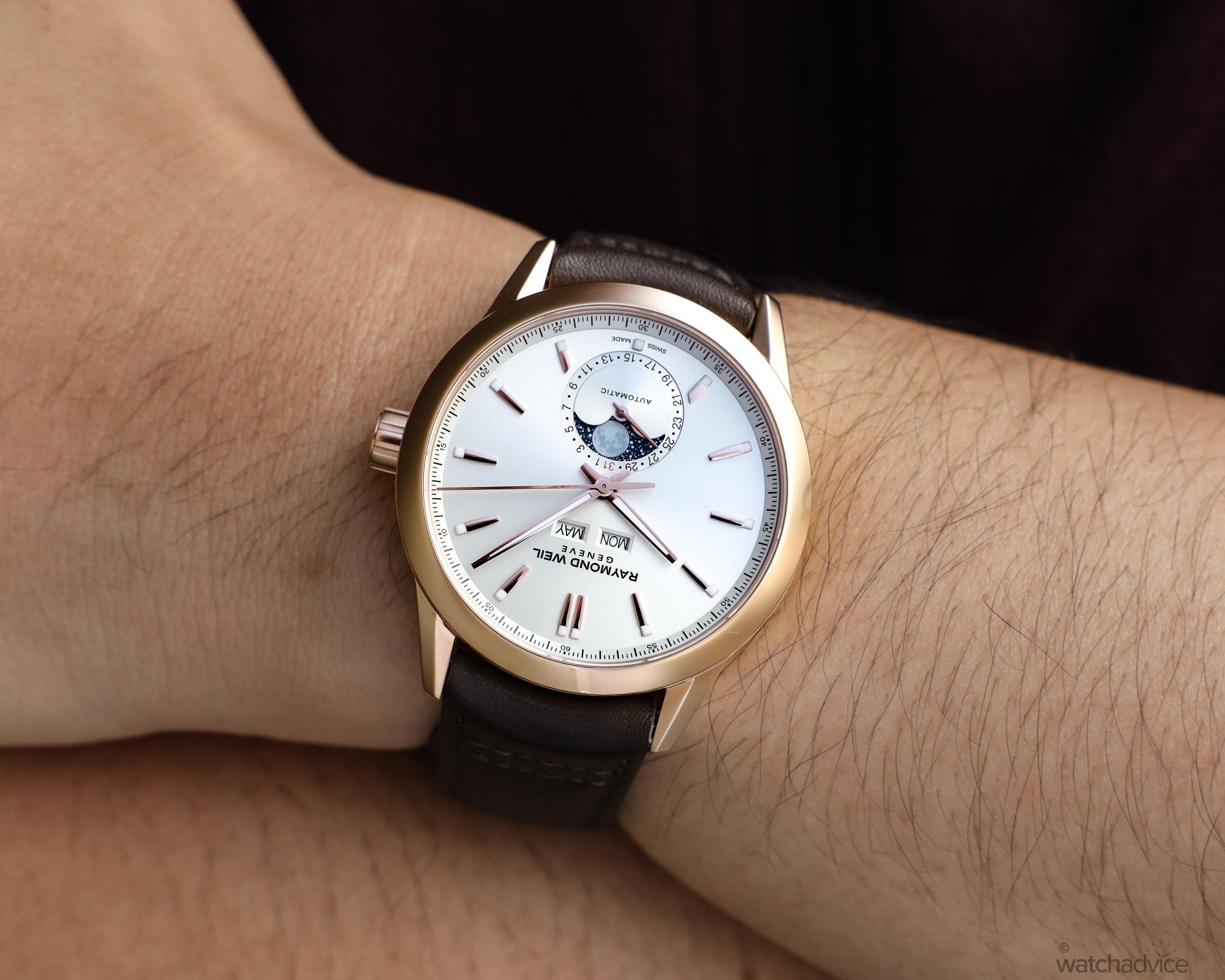
On the practical side, the leather strap and deployant system were easy to operate and adjust, with no real difficulty putting it on, taking it off, or resizing. The leather strap itself, too, was tough but comfortable once properly adjusted. One curious omission, though, was the absence of quick-release springbars. Having just seen Raymond Weil introduce them on the Millésime collection, it felt odd not to include them here. It’s hardly a dealbreaker, but I do hope the brand adopts them more widely in the future – they add a welcome touch of charm and usability for the wearer. And speaking of usability, that leads neatly into…
The Movement
As you may already know, Raymond Weil has partnered with Sellita for several years to produce its in-house designed movements. While the design work remains with Raymond Weil, almost all their calibres are manufactured by Sellita in La Chaux-de-Fonds. Maybe the closest parallel, in my mind, is Longines working with ETA under the Swatch Group umbrella. I’ve long applauded this partnership; For a relatively young independent brand, building its horological credibility alongside one of Switzerland’s most reliable movement makers was an intelligent move by CEO Elie Bernheim.
The movement inside the Freelancer Complete Calendar is no exception. Based on the tried-and-true Sellita SW300-1, it has been modified into the Calibre RW3281. Beating at the luxury-standard 4Hz (28,800VpH) and offering a healthy 56-hour power reserve, the RW3281 is as dependable as you’d expect from a Swiss automatic. Of course, Raymond Weil has made both aesthetic and functional tweaks, the most notable being the integration of the triple calendar module — impressively without sacrificing any power reserve.
But the real standout feature isn’t under the rotor at all. It’s built into the case. Remember those square panels I pointed out earlier? Instead of the usual recessed pushers that require a fiddly tool, Raymond Weil has integrated those square flank panels to allow the wearer to adjust the day and month displays directly by hand. Tool-less pushers. And I can’t believe I’m saying this, but it’s inspired. Even at the highest levels of watchmaking, this simple convenience is often overlooked. The fact that Raymond Weil implemented it here, and at a price point far below that of other prestigious brands, deserves massive praise.
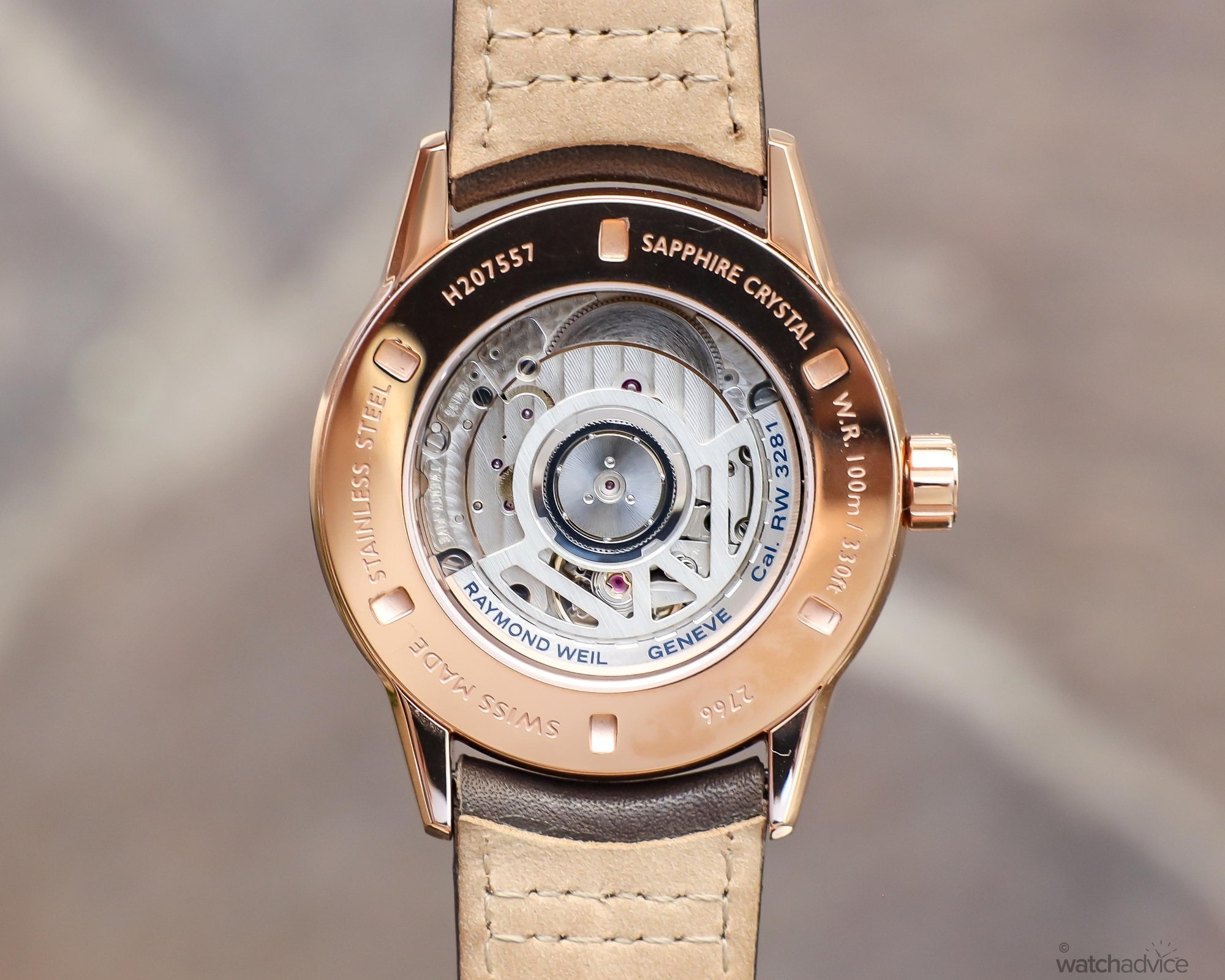
That said, my reservations about movement finishing — which I also noted in the Millésime — remain here. For the RW3281, though, it feels more noticeable. At this price point, I was hoping for a movement that looked a little more glamorous through the sapphire caseback. Don’t get me wrong: I’m not devastated. It’s clear a lot of effort has gone into the mechanical substance of the watch, and that is what always matters most. But a touch more attention to finishing — a blued screw, or a few other flourishes — would elevate the movement from competent to truly compelling.
Future iterations of the calibre should take note. The Freelancer Complete Calendar is already an impressive offering for the money; with more love shown to the movement, it could be something extraordinary. Perhaps we will only see this if Raymond Weil were to ever make their own in-house movements, or they begin to commission the higher-end arm of Sellita: Manufacture AMT.
Final Thoughts
‘Value for money’ is a slippery concept in watchmaking. Few timepieces are designed with it as a guiding principle, yet it’s often the very lens through which they’re judged and remembered. That raises a fundamental question: how do you craft a watch that satisfies such an intangible, immeasurable standard?
The answer may well lie within Raymond Weil HQ. While the Freelancer Complete Calendar might not grab the same headlines as some of its flashier Watches and Wonders counterparts, it quietly demonstrates the brand’s commitment to elevated design, solid craftsmanship, and a willingness to push back against the dominance of higher-end Swiss marques. Put simply, it’s a lot of watch for the money. Moderate in design yet confident in execution, it feels like one of the clearest indicators of Raymond Weil’s ambitions for the future.
Of course, these ambitions come at a price. At AU$6,800, the Freelancer Complete Calendar sits on the steeper side of Raymond Weil’s catalogue. Still, with nothing in the lineup crossing AU$9,000, it consolidates the brand’s position rather than overextending it. Competitors exist, as they always do: the AU$7,000 Longines Master Retrograde and AU$8,100 Baume et Mercier Clifton Baumatic Moonphase bring strong mechanics and design. From below, the Ball Engineer II Moon Calendar (US$3,149 / AU$4,899) and the AU$4,700 Mido Baroncelli Chronograph also do battle. The Freelancer Complete Calendar, however, lands neatly between these brackets in a niche that — for now — remains largely uncontested. The only true rival might be another Longines, the Master Chrono Moonphase for AU$6,000. I would argue, though, that the design of this timepiece compared to Longines’ recent collections is beginning to feel dated. Thus, it lacks the modern wearability and versatility that Raymond Weil has on offer.
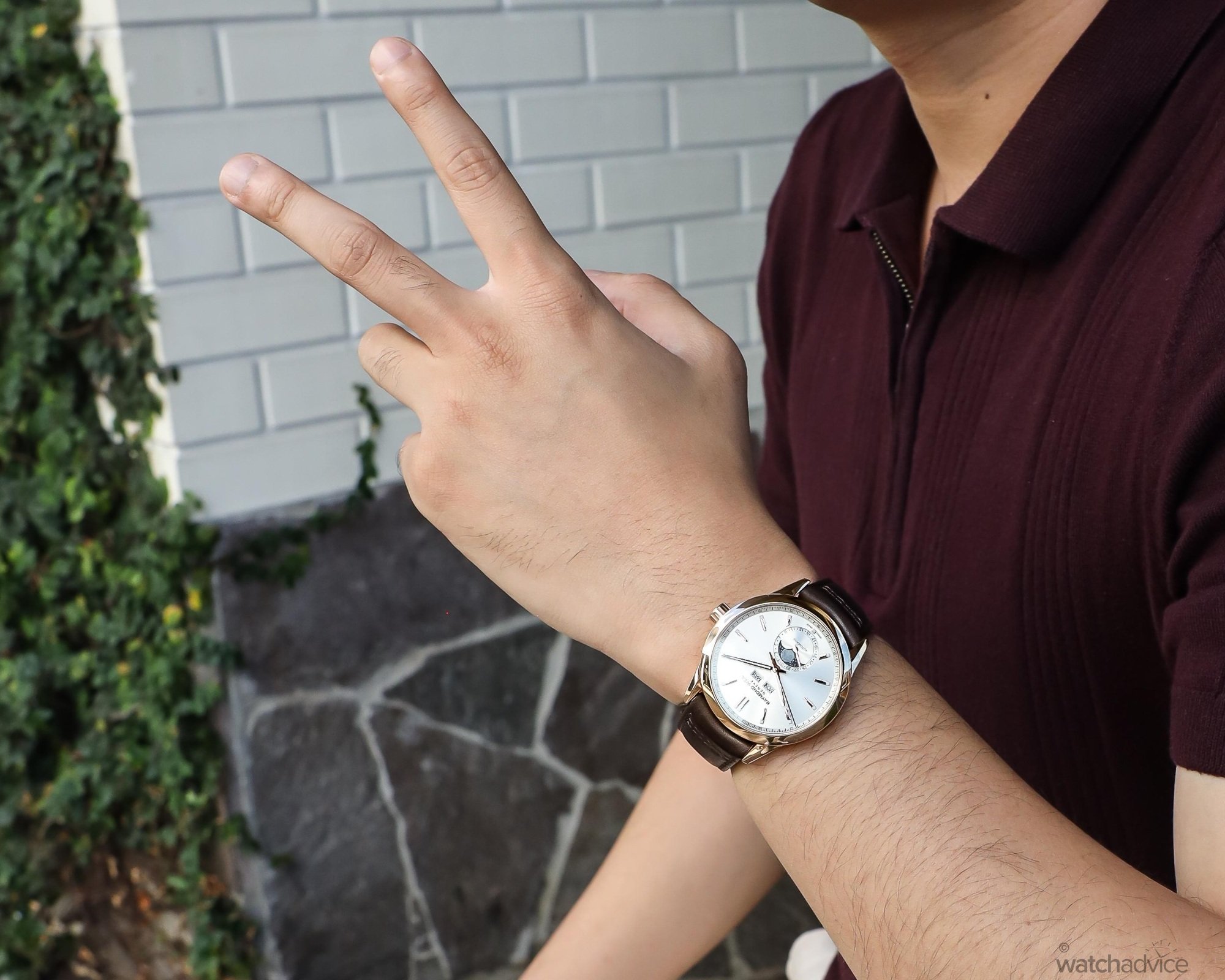
The Freelancer Complete Calendar feels like the next step in a grand evolution for Raymond Weil. Still riding the wave of the Millésime’s success, it channels that momentum into strengthening the flagship Freelancer line. Complicated dress watches have historically lived at the top of the market, so seeing Raymond Weil tackle this challenge with excellent craftsmanship and renewed ambition bodes well for the brand’s future.
Though ‘value for money’ is hard to define, Raymond Weil has never shied away from the challenge. The Freelancer Complete Calendar isn’t chasing headlines — it’s chasing the brand’s future, refining a sporty favourite with a classical twist. The result is a solid, excellently crafted timepiece that balances decadence with restraint, all at a competitive price. A sleeper hit in almost every sense of the word, the Raymond Weil Freelancer Complete Calendar has sent one message loud and clear to its counterparts: Time to wake up.
References: 2766-PC5-6400
Specifications:
- Dimensions: 40mm case diameter x 48mm lug-to-lug x 10.15mm thickness
- Case Material: Rose Gold PVD
- Dial: Sunray-brushed ‘Dune’ (Tan-Silver)
- Movement: Automatic RW3281 with complete calendar complication (day/date/month/moonphase registers)
- Power Reserve: 56h
- Beat Rate: 4Hz (28,800VpH)
- Water Resistance: 100m (10bar)
- Strap: Brown leather strap with rose gold PVD deployant clasp
Australian RRP: AU$6,800
Availability: Available now, online at RaymondWeil.com and all authorised retailers.
Image Gallery




